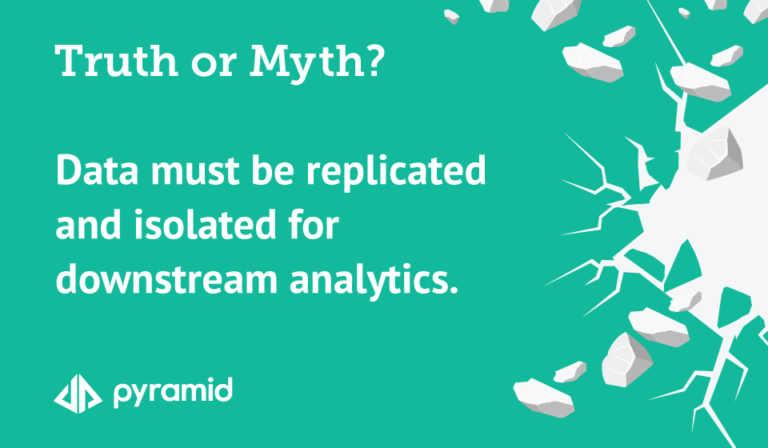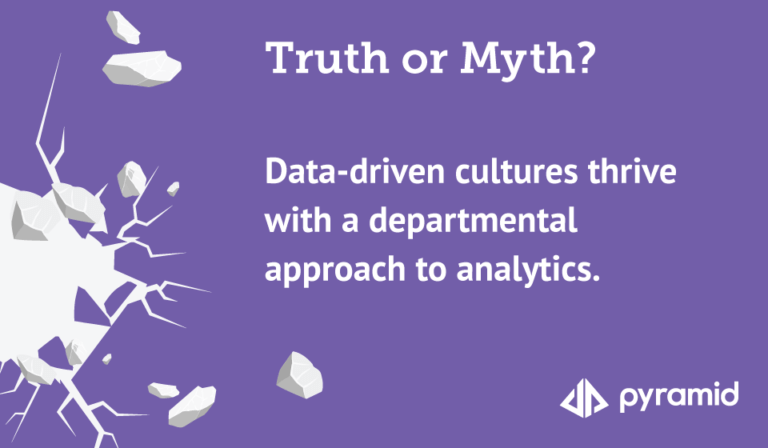In 2020, leading companies realized the true value of their analytics investments as they weathered the economic disruptions of COVID-19. Their non-data-driven competitors were often less fortunate—many retailers struggled to respond to shifts in consumer demand. For example, they lacked the capacity to understand dramatic changes in consumer behavior by the middle of the year.
Now, more companies are adopting advanced analytics to mitigate real-world, real-time business challenges, even as they align those solutions with their long-term strategic goals. That means in addition to building a technology foundation and redefining workflows to accommodate analytics, they also must change their strategic approach to become more insights-driven as an organization.
As you consider analytics adoption, it’s also time to bring your long-term analytics strategy into focus. Here we highlight how key analytics features align with those long-term objectives, even as you define the technologies and tactics that will support your near-term business goals.
Advanced Analytics Solves Real Business Challenges
Advanced analytics can transform how organizations operate. It can help employees make decisions with underutilized data and insight and then drive calculable business results.
In 2020, case studies from across industry sectors demonstrated how analytics contributes to real-world success. At MercyOne Des Moines Medical Center, efficiencies from analytics reduced time spent aligning daily staffing by 70 hours per week. Manufacturers used analytics to optimize decision-making “across the entire value chain,” and fast-tracked automation to stem worker shortages that arose from the pandemic.
Most companies strive to become more data-driven, amassing large amounts of data with that goal in mind. But few have leveraged that data for company-wide decision-making in a way that drives real business results. Instead, they have only a few employees making real use of those tools. This leaves advanced analytics bottlenecked and underutilized, its value failing to take hold as a part of decision-making that stands to truly benefit.
As pressing challenges call for quicker, smarter decisions, data leaders must equip users across the organization with enterprise analytics tools that make it easy to access, understand, and leverage insights. The technologies that accommodate this already exist, but what may not be present are details of an analytics strategy that gets your teams and your leadership to support their long-term adoption.
Onboarding Stakeholders and Team Members
As Forrester describes, successfully analytics strategies involve “intangibles” that require your attention—including “leadership, people, culture, and process”—before you can realize the real-world benefits of advanced analytics solutions: “These intangibles will make or break how well your data strategy and analytics efforts succeed.” Let’s take a closer look at how each of these contributes to a successful long-term analytics strategy.
Leadership sets an example.
Employees will not respond to new data initiatives if company leaders are not incorporating data-driven insights into their own decisions. This may require substantial changes because business decision-makers often rely on instinct rather than analytics to decide. But valuing data at the top is a surefire way to encourage its adoption among department leaders and their teams.
Teams embrace data literacy.
Company-wide initiatives that support a deeper understanding, appreciation, and grasp of analytics ensure data strategy becomes part of a companywide conversation. Formalizing your strategic approach to data literacy and data storytelling—by creating a center of excellence (CoE), for example—demonstrates that analytics culture is part of your long-term business strategy.
Analytics augments essential processes.
Bringing your analytics strategy to fruition requires change. Fortunately, successful analytics supports existing processes, augmenting them (rather than replacing employees) to support better decisions. Employees will not need to fundamentally change their responsibilities, allowing analytics to take hold more easily and effectively.
Employees get personal results.
Perhaps the most critical aspect of a successful analytics strategy is driving real results for teams. When you provide everyone individualized access to analytics in a way that supports them in their jobs, you ensure that your analytics strategy takes hold throughout the organization. You better align those employees with real business results as well.
Make Analytics Your Default Setting
“In a hypercompetitive business environment and the post-pandemic world, applying data and analytics at every chance to differentiate products and customer experiences is a prerequisite for success,” Forrester describes. But perhaps this sounds more tedious than what is really required.
Aligning analytics with strategic and business results is about “setting analytics in motion” in a way that drives these results by nature, rather than fighting to keep up with changes. In fact, fighting to keep up with changes is exactly what successful analytics helps you avoid.
Business leaders, data leaders, and other stakeholders can begin with small applications on a pathway to strategic success. As they realize small successes and emphasize data literacy and adoption, analytics becomes a default contributor to decision-making in those environments. These habits will start to take hold throughout the organization, and “applying data and analytics at every chance” is no longer a struggle—it becomes a standard you couldn’t imagine living without.












